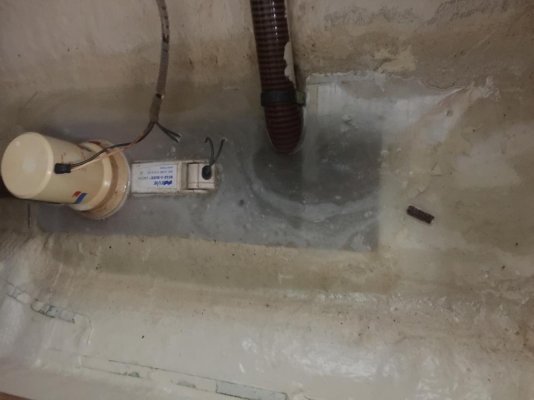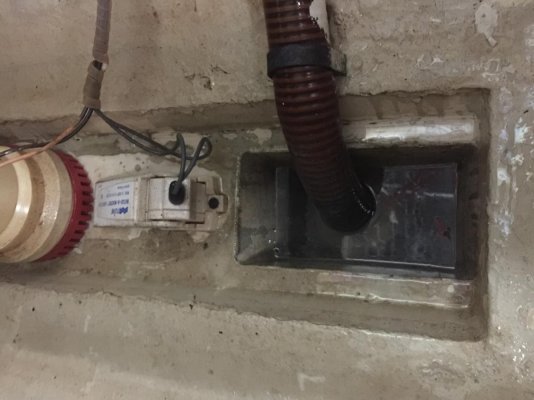I don't have a wooden boat Bob but I am with you on this. I have some leaks which I need to sort out. Finally at a stage with the new to me boat where it is in the top 3 things to do. I have in my mind that a dry or very much kept up water wise bilge will help me find the leaks. Maybe bad thinking though and I don't really need that. Every time I turn around I have a couple of gallons down there and my current bilge pump doesn't go on until that couple of gallons is in there. Because of a low level slant to the pump it is back pretty far in the center bilge area and past some weep holes. I figure if it is dry I will be able to see where it is coming from better. Again, what do I know, may be wrong on that. The first system is too much money for my need. The second one is more inviting even as a temp fix until I sort the leaks out. Bet I could sell it afterward to someone in a similar spot....?
Here is my setup for what it is worth. Bilge "full" with no bilge pump on yet and then one after being manually pumped out. That hose in the recess is the manual pump from up by the helm. The "full" picture is not really full as the water will go higher, sloshing back in the center bilge towards the bow. the first pic shows the bilge pump under water so to speak but the float is not up enough to turn it on. I wish I had a more sensitive float or that it was adjustable. Feel free to tell me if I am being stupid about this whole thing!




